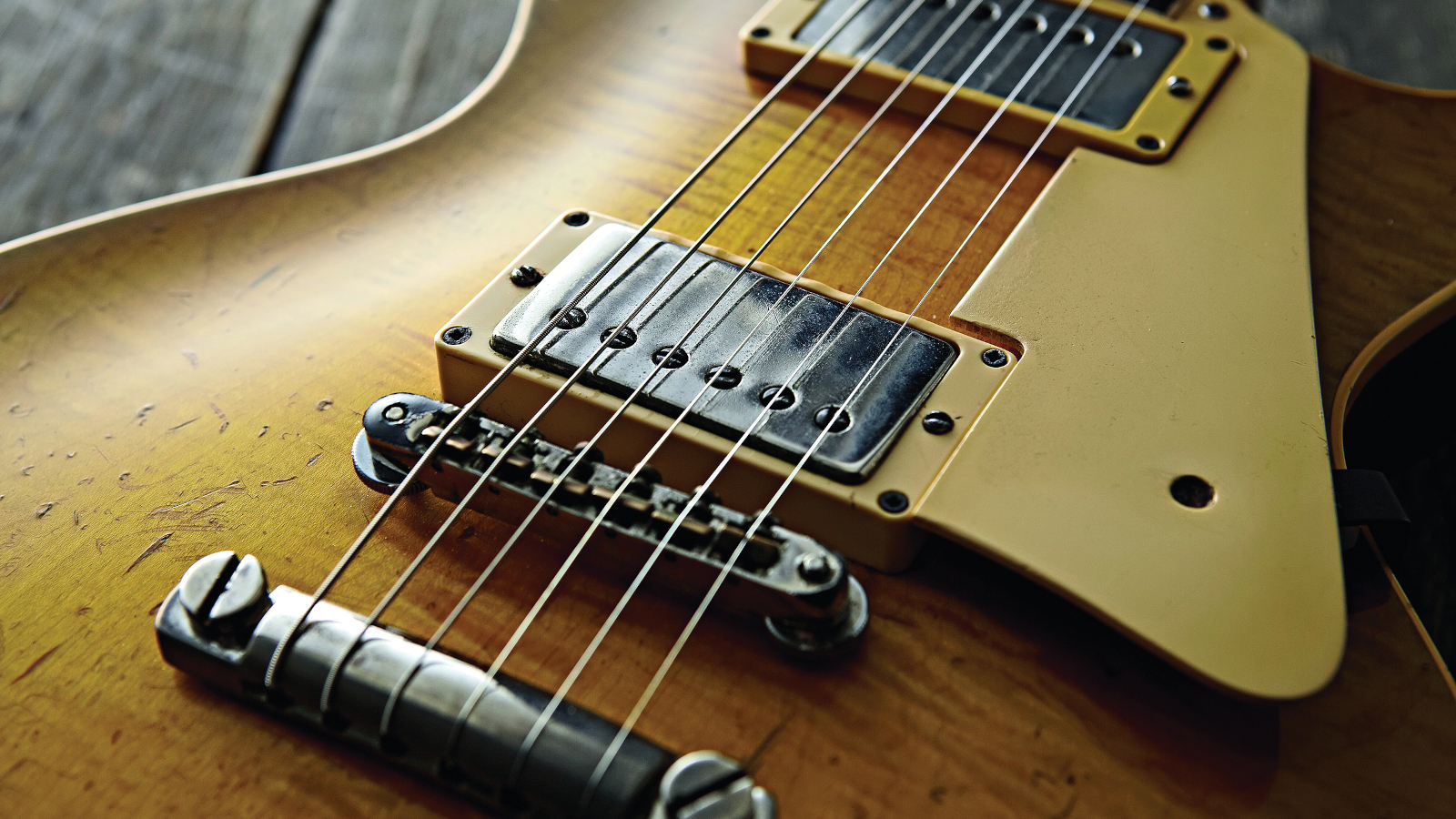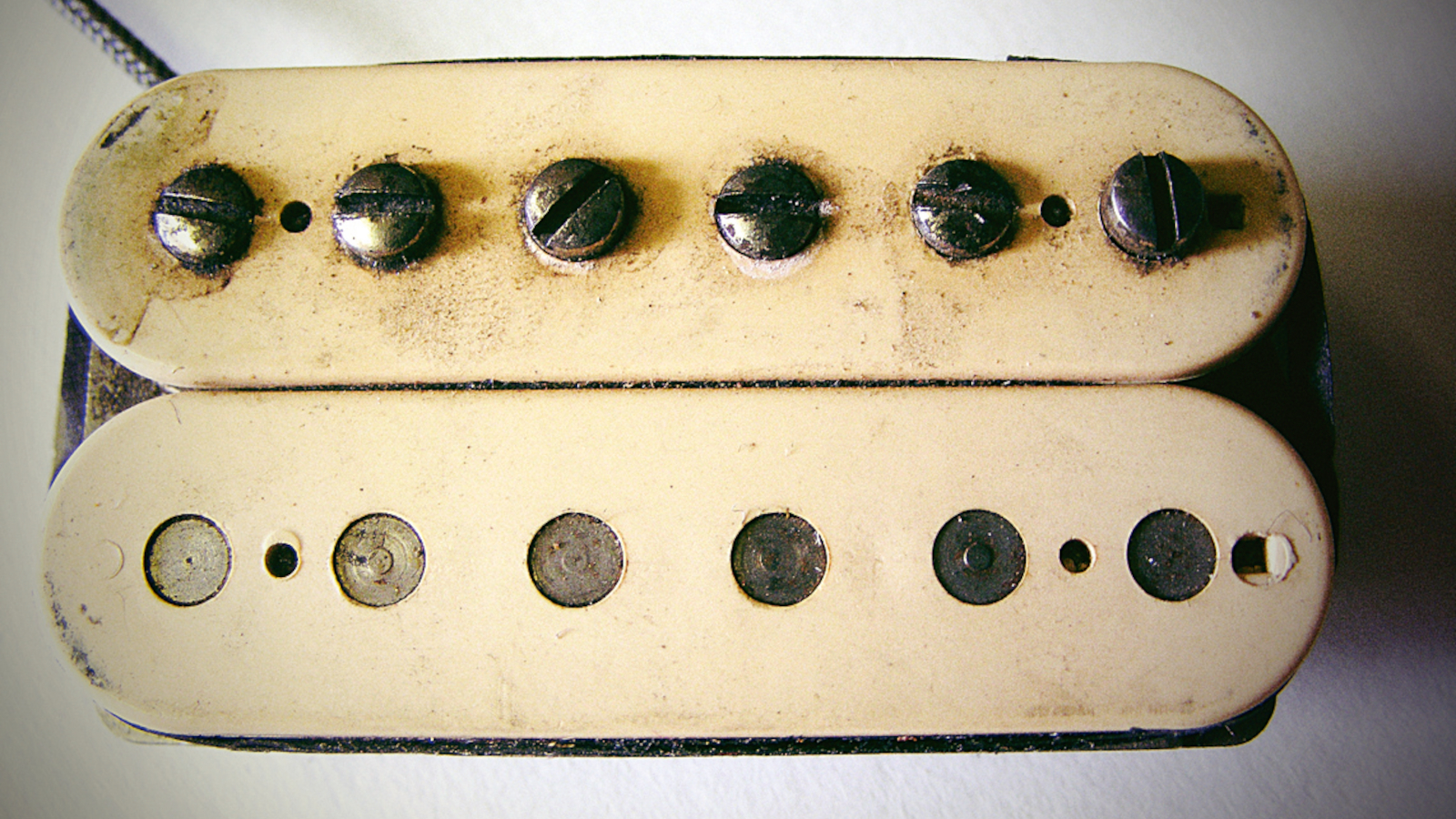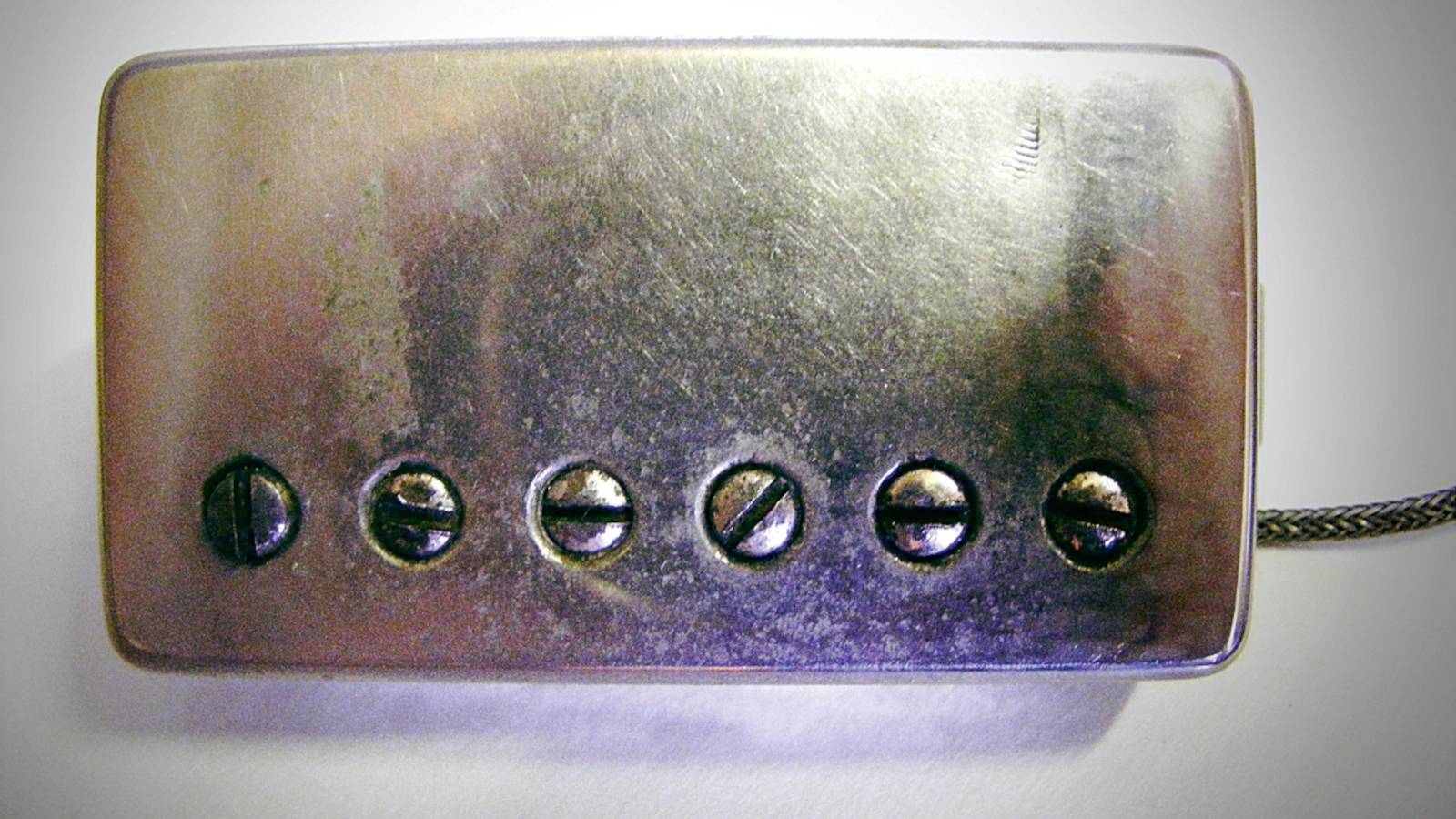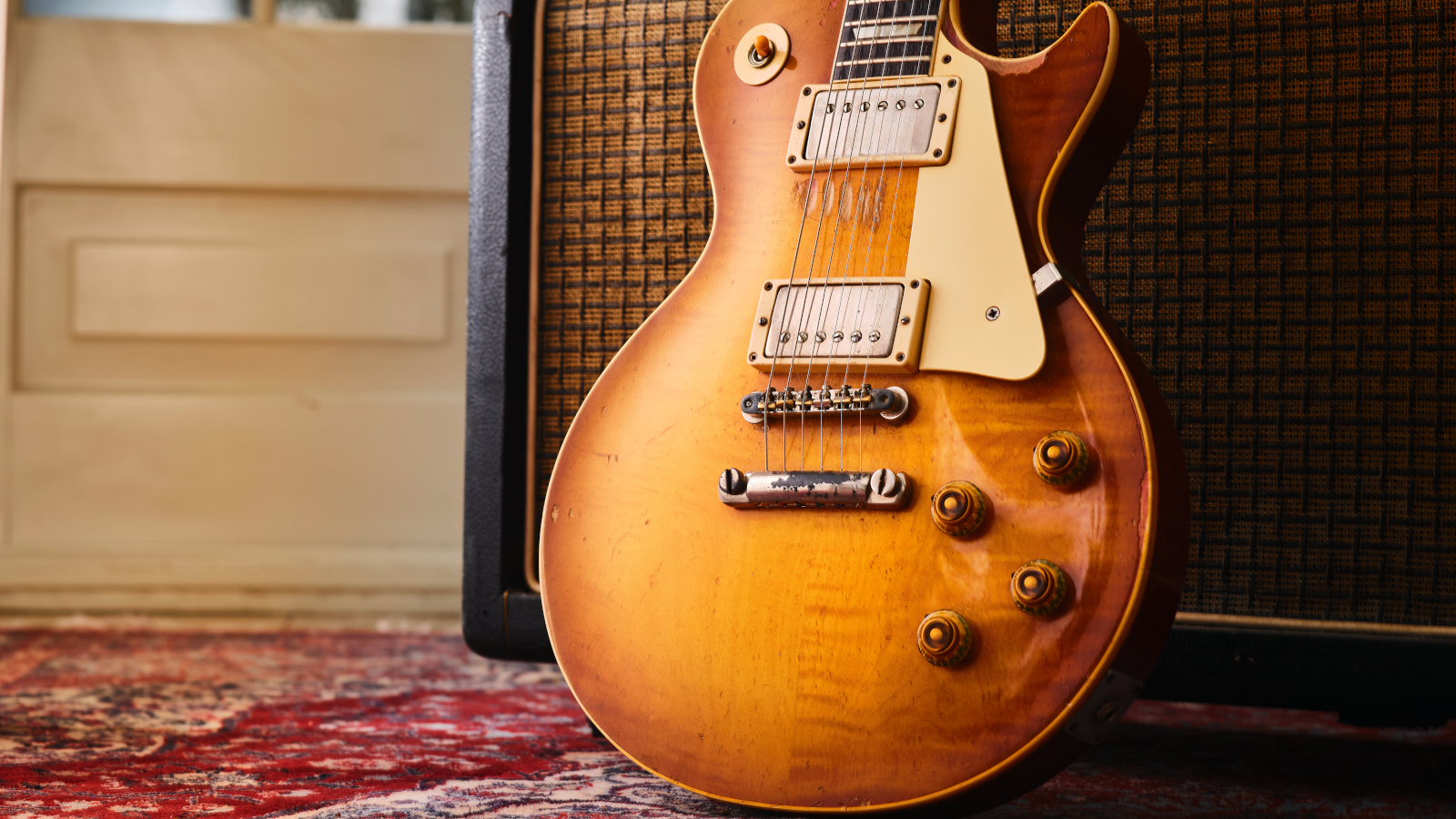All You Need to Know About Gibson PAF Humbuckers
These hum-cancelling pickups are legendary for their tone, but is the “magic” just hype?

The Gibson Les Paul Standard of 1958-1960 is commonly considered one of the most valuable standard-production guitars ever made. Drill down, though, and you can make a good case for the pickups used on those instruments as the most valuable and most desirable single component ever featured on an electric guitar.
These pickups are, of course, the hallowed “Patent Applied For” (PAF) humbuckers, which not only formed the template for the majority of full-sized humbucking pickups made over the past five and a half decades, but are also still regarded by aficionados as being the most sonically exalted pickups ever known to man.
Whether or not they justify the outlay, a good pair of original PAFs made between 1957 and early 1962 (the span during which the PAF was manufactured by Gibson for guitars) will cost you somewhere in the region of $4,000 to $10,000 on the used market today, which is a lot of money for two Alnico magnets, four plastic bobbins, two metal base plates and about a mile and a half of very thin wire.
Is the PAF’s purported “magic” just hype, the inflated elitism brought on by the laws of supply and demand? The latter might influence these high prices, as it always does, but most guitarists who have spent time with a good set of PAFs, in a good guitar, will tell you that there’s truly nothing quite like them, despite the excellent and ever-improving efforts of several new pickup manufacturers.
In 1955, Gibson president Ted McCarty tasked engineers Seth Lover and Walter Fuller with developing a hum-rejecting pickup. The resultant hum-free design reconfigured the basic ingredients of Gibson’s single-coil P-90 into a dual-coil unit, in which two similar but reverse-wound coils with opposite magnetic polarities were placed side-by-side and wired together in series.
As a result, the configuration rejected much of the hum that single-coil pickups can produce – which is negated when the signals from two “mirror-image” coils are summed together – but passed along all of the guitar tone.
In addition to their hum-rejection, the double-coil pickups’ side-by-side coil positioning also produced a warm, rich sound that can often be fuller than that of the average single-coil pickup, even one (like Gibson’s P-90) that contains the exact same amount of wire in its single coil as is used in the humbucker’s two coils together.
Get The Pick Newsletter
All the latest guitar news, interviews, lessons, reviews, deals and more, direct to your inbox!
The engineers also added a thin metal cover made of nickel silver (aka “German silver”), an alloy of copper, zinc and nickel, which further reduced electrostatic interference.
Creations made in the first five or six years of the new pickup’s existence became known as PAFs because of the “Patent Applied For” decal that Gibson affixed to their bottoms from the time of their first appearances in the Les Paul Model goldtop and Les Paul Custom in 1957 (the very first Gibson humbuckers, some with three coils, were used in lap-steel guitars before that, and had no decal).


It’s worth noting that Gibson was not the first company to develop the humbucking concept, but was the first to apply it successfully to a widely produced electric guitar, just ahead of Gretsch’s implementation of the Filter’ Tron in 1957.
Gibson was, in fact, granted its patent in July of 1959, but either decided to use up old stickers for another year and a half, or resisted putting new “Patent No” stickers on the pickups to keep competitors from searching out the file at the U.S. Patent Office (the stickers eventually applied mid-way through 1962 carried the number awarded to a bridge patent).
Given the PAF’s simple ingredients, wherein lies the magic? Lover purportedly spec’d Alnico V for the pickup’s single bar magnet, which was positioned at the bottom of the coils between the six adjustable polepieces in one coil and six fixed steel slugs in the other. But Gibson is said to have used Alnico II, III, IV and V somewhat indiscriminately from 1956 to ’61, depending on what was available, and the sound and feel of these pickups can vary somewhat as a result.
Creations made in the first five or six years of the new pickup’s existence became known as PAFs because of the “Patent Applied For” decal that Gibson affixed to their bottoms
Specs also called for 5,000 turns of 42 AWG plain-enamel-coated wire per coil, but most PAFs actually have unevenly wound coils (as revealed by their resistance readings), as well as considerable variances in the total numbers of turns, and the rough patterns of the windings.
That mismatch between coils can attribute a certain “bite” and added harmonic texture to the guitar tone, which is a big part of the hallowed PAF sound. The fact that these early humbuckers also were not wax-potted further enhances their complexity and overtone content.
Such inconsistencies mean that any two original PAFs will likely sound quite different, and resistance readings of anywhere from slightly under 7k Ω to around 9k Ω (in some rare extremes) also tell you that their perceived output and the ratio of bass, midrange and treble will also differ wildly.
Put together these and a handful of other variables – the precise metal that the polepieces and base plates were made from, for example, as well as the fine-points of other minor components – and a good PAF would seem easy enough to reproduce. Yet most players who have used them extensively agree that the best modern efforts can come close, but rarely totally nail “that sound.”

Part way through 1961, Gibson became more consistent in its use of Alnico V magnets. The length of the single magnet in each pickup was also reduced slightly, from 2 1/2 inches to 2 3/8 inches – a seemingly minor change, but significant to collectors.
Coil winding also became somewhat more consistent around this time, although resistance readings of pickups from 1961-’63 can still vary quite a bit.
These were the same ingredients still in use when the “Patent No 2,737,842” stickers hit the base plates in 1962, so these early “Pat No” pickups are no different from late PAF pickups other than in the thin water-slide decal that adorns them.
the “Patent No 2,737,842” stickers hit the base plates in 1962
A more reddish looking polyurethane wire replaced the purplish plain-enamel wire in 1963, and this generally denotes the end of the “golden age” of Gibson humbuckers, although the pickups that followed throughout the rest of the ’60s are still well-regarded.
To taste the legendary tones of which great PAFs are capable of, dip into Eric Clapton’s playing on John Mayall’s Blues Breakers with Eric Clapton from 1966, much of Paul Kossoff’s early work with Free, Michael Bloomfield’s post-Telecaster playing of the late ’60s, or seek out any of the contemporary players of the past several years who have applied these hallowed hunks of magnet and wire to their art: from Mark Knopfler to Joe Bonamassa to Slash.
And be aware that these pickups were loaded into all of Gibson’s humbucker-carrying guitars between 1957 and early ’62, not just the Les Paul, although PAFs used in some fully hollow archtop-electrics with narrower string spacings – such as the Byrdland or L-5 – will have a narrower pole spacing in the neck position, and sometimes in both positions.
Dave Hunter is a writer and consulting editor for Guitar Player magazine. His prolific output as author includes Fender 75 Years, The Guitar Amp Handbook, The British Amp Invasion, Ultimate Star Guitars, Guitar Effects Pedals, The Guitar Pickup Handbook, The Fender Telecaster and several other titles. Hunter is a former editor of The Guitar Magazine (UK), and a contributor to Vintage Guitar, Premier Guitar, The Connoisseur and other publications. A contributing essayist to the United States Library of Congress National Recording Preservation Board’s Permanent Archive, he lives in Kittery, ME, with his wife and their two children and fronts the bands A Different Engine and The Stereo Field.
"We tried every guitar for weeks, and nothing would fit. And then, one day, we pulled this out." Mike Campbell on his "Red Dog" Telecaster, the guitar behind Tom Petty & the Heartbreakers' "Refugee" and the focus of two new Fender tribute models
“A good example of how, as artists, you have to blindly move forward with crazy ideas”: The story of Joe Satriani’s showstopping Crystal Planet Ibanez JS prototype – which has just sold for $10,000












